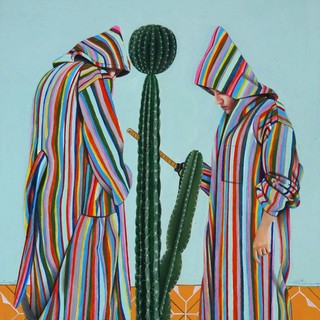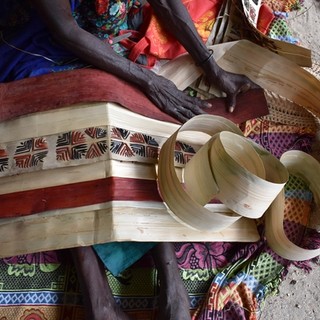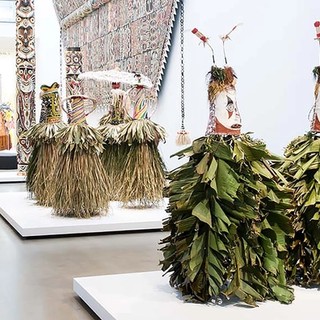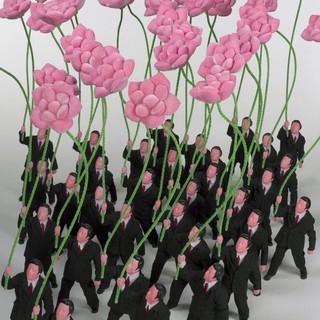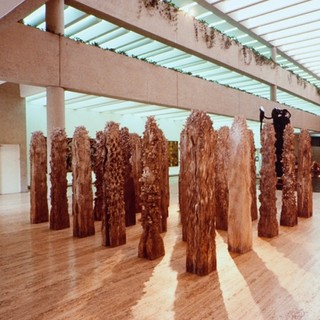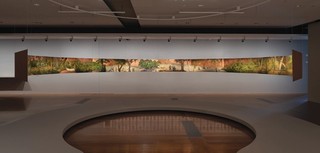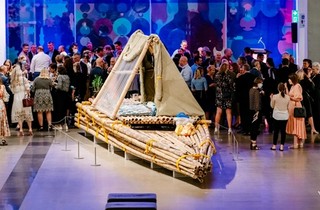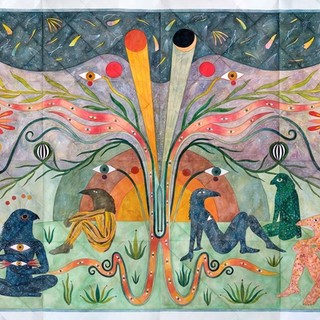
Rithika Merchant, India b.1986 / Temporal Structures 2023 / Gouache, watercolour and ink on paper / 105 × 150cm / The Taylor Family Collection. Purchased 2024 with funds from Paul, Sue and Kate Taylor through the QAGOMA Foundation / Collection: Queensland Art Gallery | Gallery of Modern Art / © Rithika Merchant / View full image



